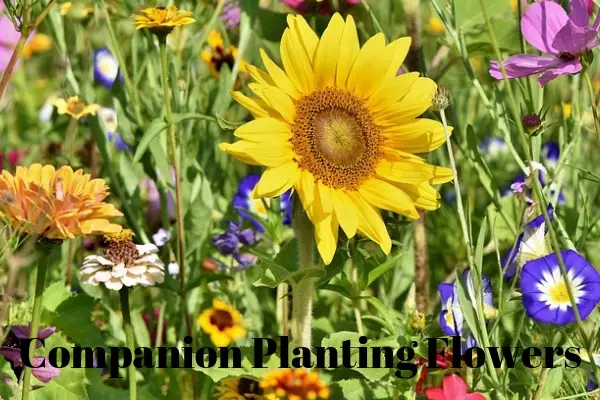Nothing looks nicer than a well balanced, colourful garden display and to achieve this effect you need to understand something about plants. You have to know how plants inter act with each other. What you have to know is how companion planting flowers works.
All plants need certain conditions to grow successfully and getting this right will greatly enhance your display. By understanding the various needs of each plant will help you to position it in the correct conditions to maximise growth. That said, not all growth is good, for example if you want a show of flowers and your plants have too much nitrogen in the soil.
If too much nitrogen is present your plants will grow lush, healthy looking plants, but they will not flower or fruit. So depending on the plants needs to grow as it should will determine where it is planted. By combining plants that grow in similar conditions, you will achieve the desired effect this is called companion planting.
What Is Companion Planting
As stated above, one aspect of companion planting is grouping plants together that need the same conditions to grow. Companion planting is much more than that though, it’s also about finding plants that give or receive some benefits from growing together. These benefits can be in the form of protection, improving health, attracting beneficial insects or deterring predators.
Some plants are known to keep various pests like Aphids, Slugs/Snails, certain beetles or other insects that will quickly damage and even kill your plants away. Other plants attract pollinators to themselves and all other plants in close proximity. Still more are used to generate extra nutrients that many plants cannot tap into due to not having a deep enough root system.
For many years companion planting was debunked by the so called experts as a myth and not taken seriously. But history proves that it’s not a myth, just a forgotten practise. Companion planting was certainly known about in Roman times(2000 years ago) and there is also evidence of the ancient indigenous peoples of the Americas companion planting 10,000 years ago.
If you want to find out more about the history of companion planting click here to go to my post, the history of companion planting. There is enough scientific evidence to support the case for companion planting and if you’ve got this far, you don’t need convincing. So let’s get into companion planting flowers.
Companion Flowers For Vegetables
Any plant that earns a place in my garden has to work for it, it’s all well and good looking nice, but how does it benefit my plot. So all of the following have been proved to help my vegetables in some way.
Calendula
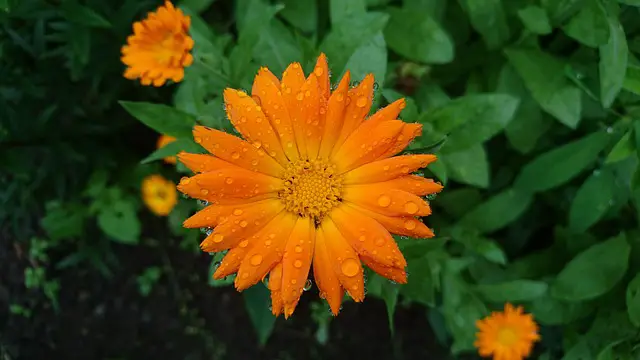
The so called pot marigold (Calendula Officinalis) is a common flower throughout the UK and has pretty yellow, sometimes orange flowers. Calendula is good for repelling white flies. Not to be confused with the African or the French Marigolds
Aster
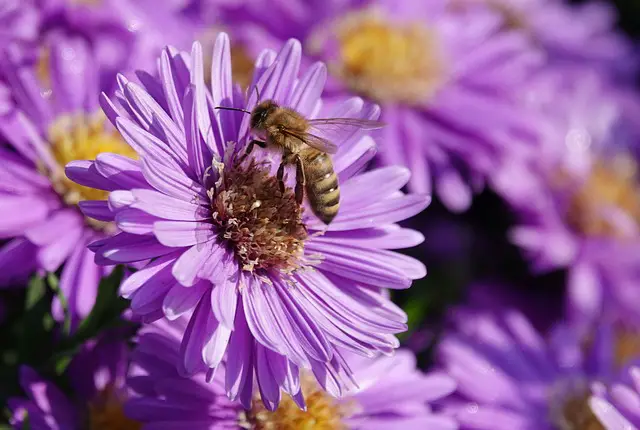
Grow asters (Michaelmas daisies) to attract many beneficial insects to your garden, including bees and butterflies. Particularly good companions for asparagus and they make a beautiful blaze of colour in your garden.
Tagetes
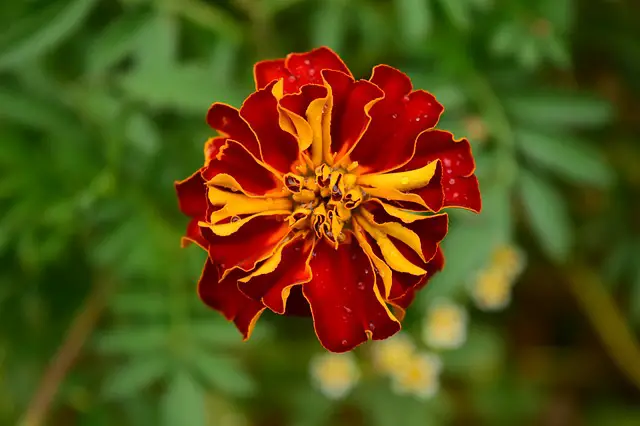
Otherwise known as the French, African or Mexican marigold emits strong chemicals through their roots that keeps nematodes away. The whole plant has such a strong aroma that aphids and other nuisance pests will keep away. Even at the end of the season when the plants have finished producing blooms they can be raked into the soil to continue their insect repellent ways.
The roots also actively encourage the growth of mycorrhizal fungi in the soil which forms a beneficial symbiosis with plant roots and both benefit from the transfer of nutrients.
Poached Egg Plant (Limnanthes douglasii)

The Poached Egg plant so called because of the look of the flowers, attracts Hover flies in their thousands. Hover flies are great pollinators and their larvae are voracious aphid eaters. Grow a clump of poached egg plants where ever tender, aphid loving plants are growing.
They are very prolific seed producers so even though they are annuals(only last for one year), they will come back year after year. The whole plant can be hoed into the soil at the end of the season to improve the soil.
Nasturtiums (Tropaeolum)
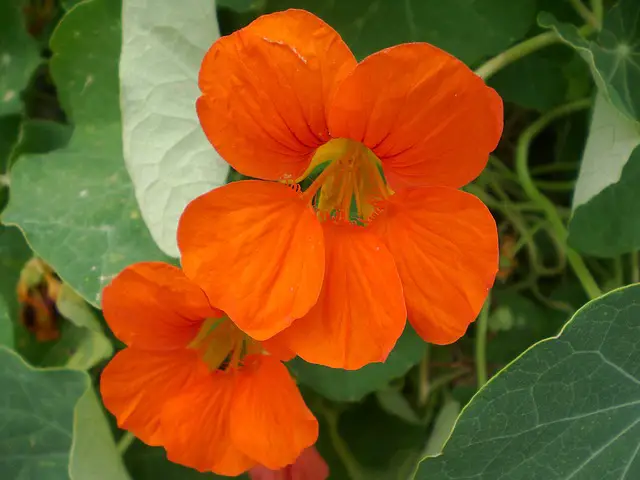
These pretty flowers come in many colours and are all edible, the leaves and flowers have a peppery, water cress flavour and the seeds are known as poor mans capers. These should be grown mainly as a sacrificial crop as they will attract aphids in great quantities. Because of this try to keep them away from delicate plants if possible.
Bees are also attracted to nasturtiums giving the added bonus of bringing pollinators into your garden.
Comfrey (Symphytum officinale)
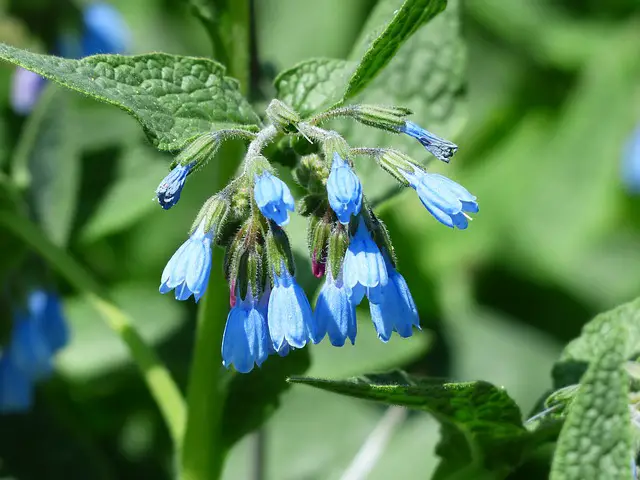
Comfrey is the gardeners wonder plant, the flowers attract many pollinating insects including bees and hover flies, and the leaves and stem can be used to make the most effective plant food. The roots of the comfrey plant stretch far down into the soil releasing nutrients unreachable for many other plants and this is why it is known as a dynamic accumulator.
It can be grown in shady conditions and is pretty much indestructible so will stand most conditions. The only fault with this wonder plant is that it can become a bit invasive. You need to keep it under control and take care if removing it as one small piece of root is all that is needed to regrow it.
Borage (Borago officinalis)
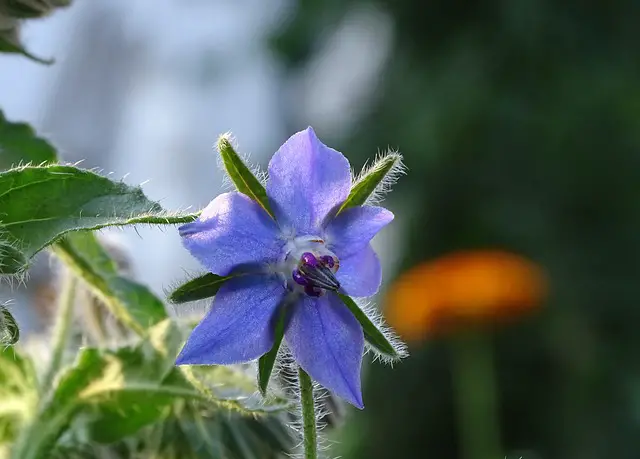
Another dynamic accumulator and another plant that attracts many pollinators including bees and butterflies. Borage will improve the health of all of it’s companions and should be included in every garden. At the end of the season it can be hoed into the soil to improve it for next year.
Traditionally grown with strawberries, borage will help to increase fruit numbers by attracting bees to pollinate more flowers. It will also improve both the flavour of the fruit and the health of the plants due to the deep rooted minerals it releases and shares with it’s companions.
Chamomile
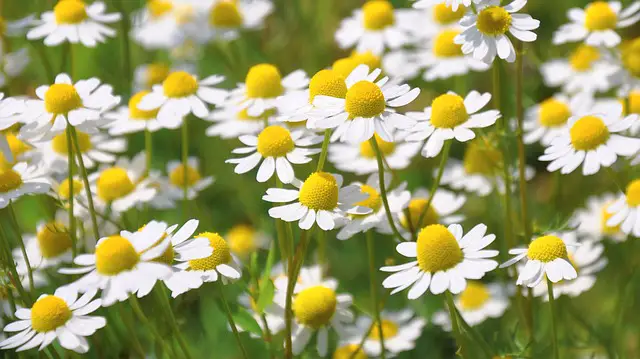
This member of the daisy (Asteraceae) family, is not only good for it’s health giving properties, but also for it’s attraction of many insects to the garden. Insects including bees, butterflies, and parasitic wasps which will pollinate, and protect companion plants from predators that will otherwise damage and kill your plants.
Ornamental Onions (Alliums)
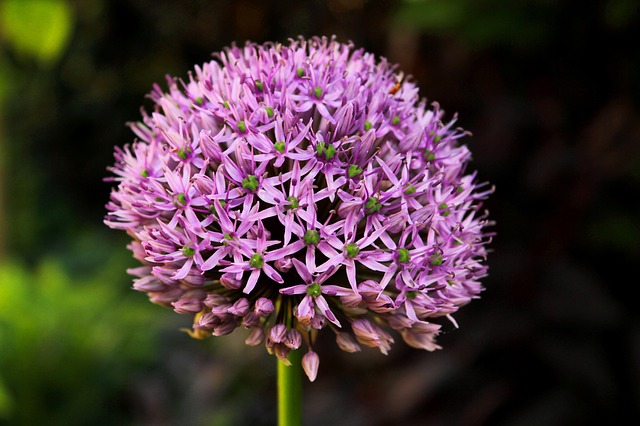
Mostly grown for their height and colour, ornamental onions are members of the allium family which include onions, garlic, leeks, and chives. They make a grand show with their blue, purple or white flowers and they attract many beneficial insects including hover flies, bees and some butterflies too. Although not as strong flavoured as their culinary cousins, all are edible.
If you are growing onions, leeks or even garlic on your plot allow the odd one or two to flower and go to seed and see how many insects it attracts.
Carrots
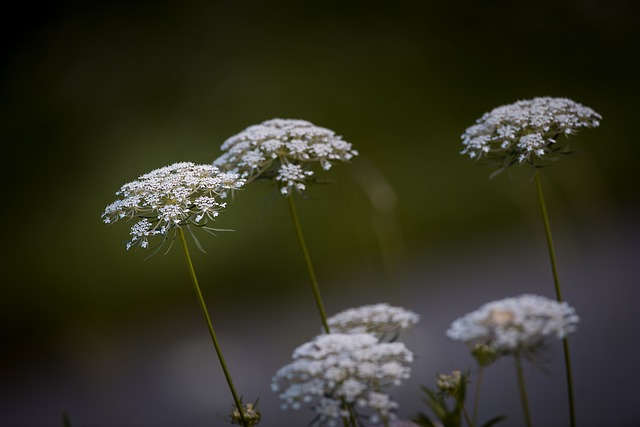
Members of the umbellifer family including carrots, parsnips, and parsley if left to flower attract many beneficial insects including bees, hover flies and some butterflies. Leave the odd one or two to add colour and help pollinate other garden plants.
Cosmos
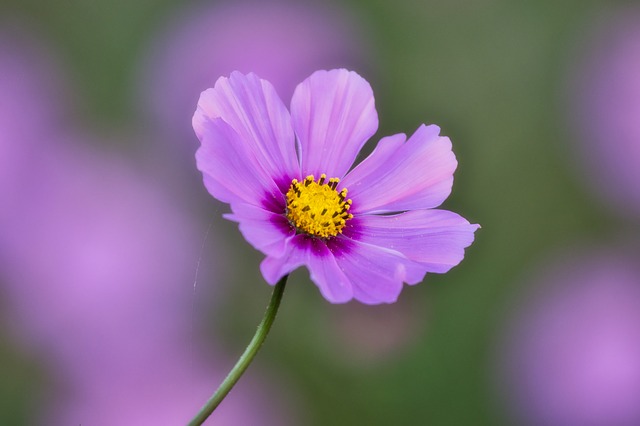
Members of the same family as sunflowers, cosmos are a bright, attractive flower and will look at home in any garden. The delicate almost lace like leaf is in my opinion just as attractive as the flower in it’s own way. They will attract Bees, Aphids, Hover flies and Lacewings to your garden, the last two to consume the aphids.
Grow as a stand alone plant or as part of a display these beauties will always brighten any plot.
Sunflower (Helianthus annuus)
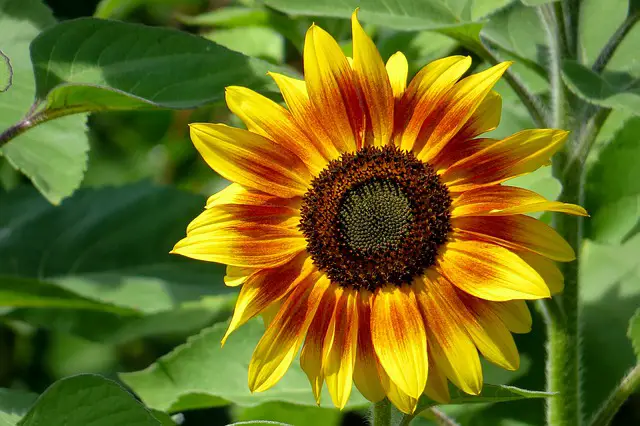
These annual flowers range in size from 2 foot(60 cms) to 10 foot (3 metres) and attract many pollinators and birds to your garden. Care should be taken as the sunflower is allelopathic, it gives off chemicals through it’s roots that can stop other plants from germinating. Great for stopping weed growth but not so good for your seedlings.
Bear this in mind and only plant fully grown plants next to sunflowers and you will not have a problem. Also choose wisely to keep your display to the height you require. Check seed packets before purchase to avoid disappointment. Remember to save some seed for next year if you can get them before the birds 🙂
Zinnia (Zinnia elegans)
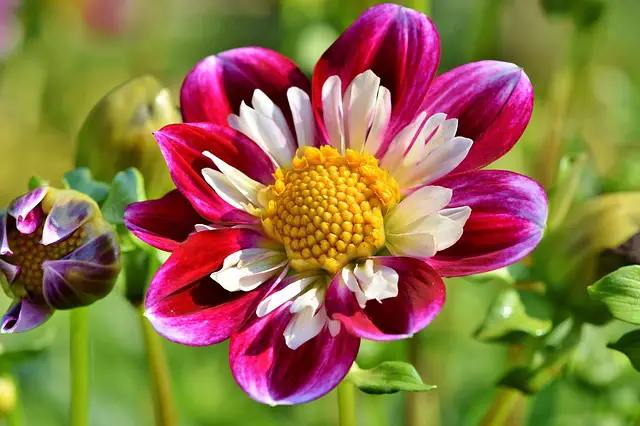
These nectar rich flowers will attract many pollinators including bees, hover flies, and butterflies and look very pleasing in a garden setting. The only problem with zinnias is they also attract Japanese beetles, which can severely damage roses, maples, elms, grapes, and malus (apple) trees.
So use zinnias as sacrificial plants if Japanese beetles are a problem in your garden. It’s not all bad news however as Japanese beetles also devastate poison ivy and bracken plants.
Sweet Peas (Lathyrus odoratus)
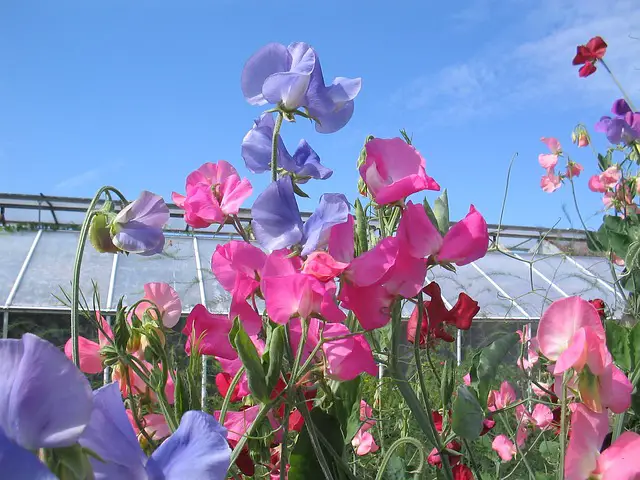
These climbing, flowering plants come in many colours, some fragrant and some not. There are some varieties that are perennials but most are annuals. They give height to your displays, and attract pollinating insects to your garden.
Grow sweet peas amongst your runner bean plants to attract bees to pollinate both plants. As long as you keep cutting the flowers the sweet peas will keep producing until the first frosts. They make good cut flowers especially the fragrant varieties.
Petunia
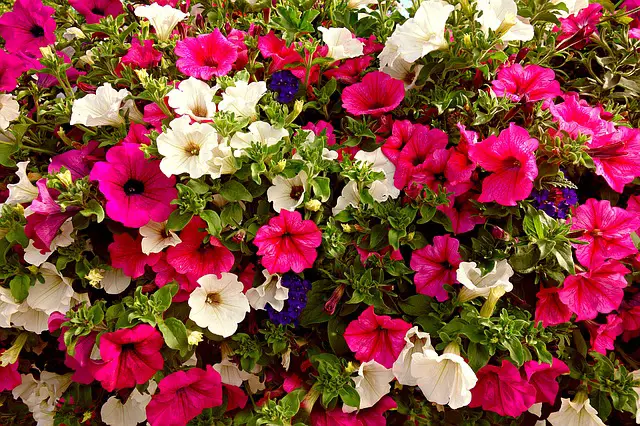
Available in many colours, the petunia is a great companion plant and a colourful addition to your garden display. Petunias repel asparagus beetle, tomato moth, aphids, and leaf hoppers so are great for keeping your garden and your plants free from insect damage. The leaves can be made into a insect repellent spray, just add leaves to water and leave to steep for 7 days, strain before use.
Plants that benefit from companion planting with petunias include, Roses, Tomatoes, Sweet Corn, Peppers, Beans, Grapes, Basil, and Broccoli.
Lavender
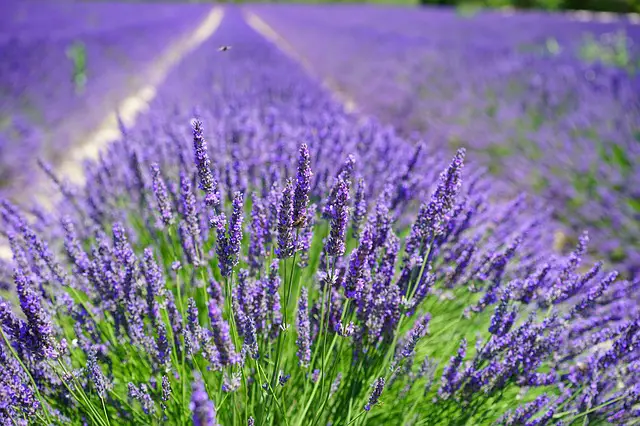
Every garden should have at least one type of lavender plant, and that’s the great thing there is such a variety to choose from. Lavender makes a good companion plant to other Mediterranean herbs like, Thyme, Rosemary and Sage. It should not be grown too close to vegetable plants as vegetables need much more water than lavender.
It should however be included in a vegetable garden as a stand alone plant because of all the beneficial pollinators it attracts.
Penny Royal (Mentha pulegium)
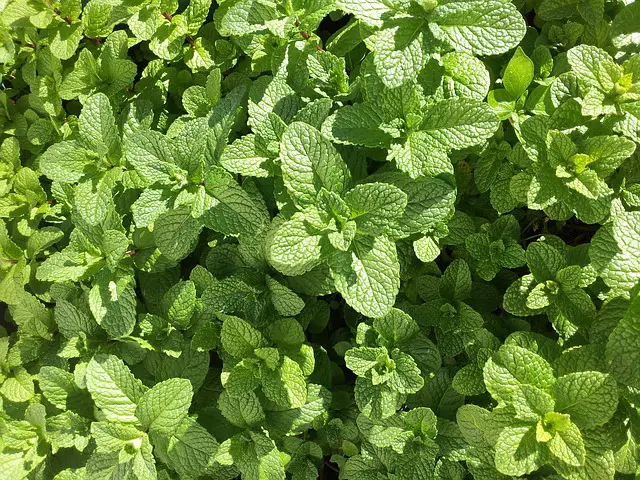
This member of the mint family is good to grow around brassicas as it repels flea beetles. Plant wherever you spot leaves peppered with little holes as this is the work of the flea beetle.
Flowers To Plant In The Vegetable Garden To Deter Pests
This information is available above but to make it easier for you to remember see the list below.
- Cosmos
- Carrots
- Onions
- Chamomile
- Comfrey
- Poached Egg Plants
- Marigolds
- Penny Royal
- Petunia
- Zinnia
Best Flowers To Plant With Vegetables
All of the above will work well with vegetables, just take care with sunflowers as they are allelopathic and will stop seeds from germinating.
Allotment Companion Planting
Use any of the above plants to companion plant on your allotment but remember to keep lavender away from vegetables. Try using these next few as filler crops between growing times to use as green manure. Which adds nutrients to the soil and if left to flower attract pollinators to your garden.
Buckwheat
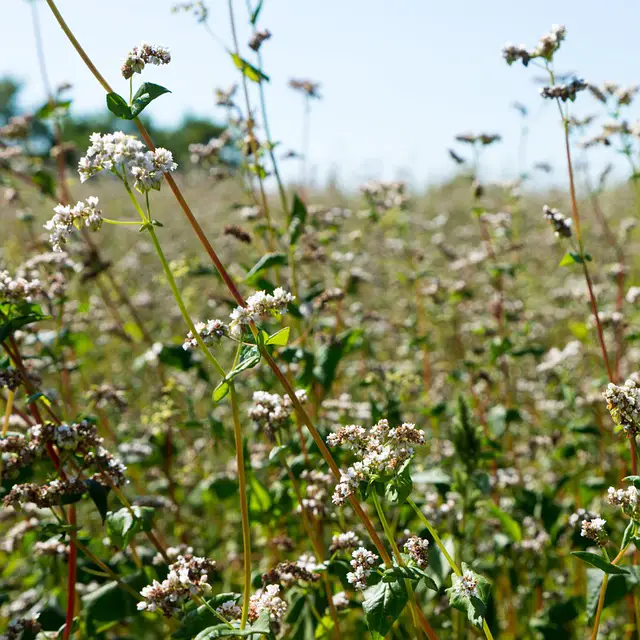
Grown originally as a grain crop, buckwheat is actually a member of the rhubarb family. Grow buckwheat as a cover crop to suppress weeds and hoe it into the soil to add phosphorus to the soil. Allow buckwheat to flower to attract bees and hover flies to your garden.
As a bonus the seeds can be dried and used as a cereal crop.
Buckwheat attracts many beneficial insects including hover flies. If grown within 20 feet(6 metres) of potatoes, beans or broccoli, the hover flies will protect the crops from harmful insects.
Clover (Trifolium)
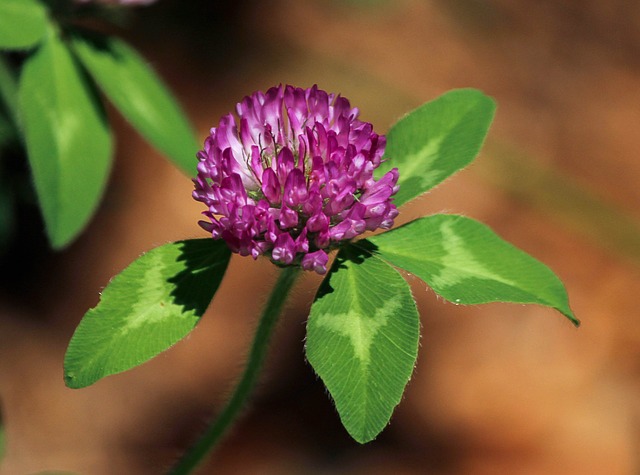
A member of the same family as beans and peas, clover is another great cover crop and green manure.Grow clover to add nitrogen to the soil. Bees are attracted to the rich, nectar producing flowers so if possible allow clover to flower before hoeing it into the soil.
Phacelia

Grown as a ground cover crop in early spring this attractive lacy leafed plant produces an abundance of flowers. Bees and butterflies flock to partake of the rich nectar from this long flowering plant. Unfortunately so do ants, flies, beetles and other unwelcome pests so it’s best to turn this plant into the soil before it flowers.
Companion Planting UK
All of the above can be grown in the UK and are all good companion planting flowers. Don’t forget to keep lavender and other Mediterranean plants separate from vegetables because of the different watering requirements. Maybe grow them in pots or containers and dot around your garden.
Herbs As Companion Plants
I have touched on companion planting herbs in this post but to find out more click here.

